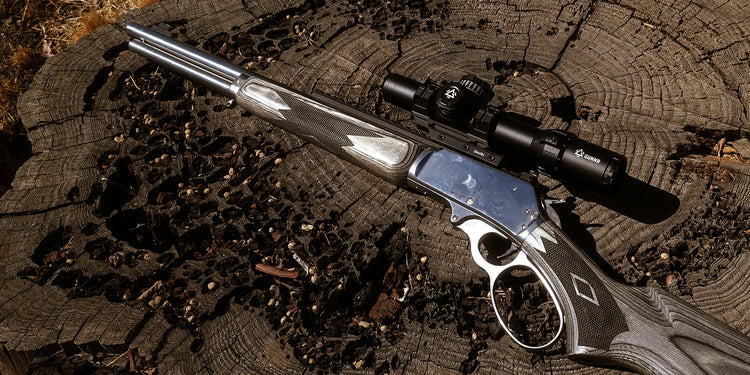Tactical Shooting vs. Precision Shooting: Key Differences & Equipment Guide
Tactical shooting and precision shooting are two major disciplines in competitive and professional shooting. Each demands different skills, strategies, and equipment. This guide outlines the core differences and helps shooters choose the right optics and gear for their needs.
Comparison Table: Tactical vs. Precision Shooting
Tactical Shooting: Speed, Mobility & Practicality
Characteristics
- Fast-paced, requiring shooters to move quickly and engage targets dynamically.
- Targets vary in distance, often from close quarters to mid-range.
- Obstacle navigation and shooting from different positions are critical.
- Timed scoring system, rewarding speed without sacrificing accuracy.
- Popular in law enforcement, military training, and civilian competitions.
Recommended Firearms
- Rifles: AR-15 and similar platforms with rapid follow-up shots.
- Handguns: High-capacity semi-automatic pistols.
- Shotguns: Tactical pump-action or semi-auto shotguns.
Recommended Optics
- LPVO (Low Power Variable Optic) (e.g., 1-6x, 1-8x): Enables both close-range engagements and mid-range precision.
- Red Dot Sights: Enhances rapid target acquisition and movement-based shooting.
- Magnifiers: Used in combination with red dots for quick magnification.
Precision Shooting: Long-Range Accuracy & Ballistics Mastery
Characteristics
- Extreme accuracy required, often shooting at distances beyond 500 yards.
- Ballistic calculations, including wind drift, elevation adjustments, and atmospheric factors.
- Stable shooting positions, often involving bipods, tripods, or barricades.
- Matches involve multiple shooting positions, adjusting to real-world conditions.
- Requires deep knowledge of ammunition performance and external ballistics.
Recommended Firearms
- Bolt-Action Rifles: Examples include the Remington 700, Tikka T3, and custom-built precision rifles.
- Semi-Automatic Precision Rifles: AR-10 and similar platforms chambered in 6.5 Creedmoor, .308 Win, or .338 Lapua.
Recommended Optics
- High Magnification Scopes (HPVO) (e.g., 5-25x, 7-35x): Designed for extreme long-range precision.
- First Focal Plane (FFP) Reticles: Ensures reticle subtensions remain accurate at all magnifications.
- MRAD/MOA Turrets: Allows precise adjustments for windage and elevation.
- Spotting Scopes: Used to observe and analyze impacts at long distances.
Environmental Adaptation: Shooting in Different Conditions
Tactical Shooting in Different Environments
- Urban Settings: Often includes shooting around barriers, in buildings, and navigating tight spaces. Red dot sights and LPVOs are ideal for quick target acquisition.
- Low-Light Conditions: Requires the use of weapon-mounted lights or night vision optics to maintain visibility and accuracy.
- Extreme Weather (Rain/Snow): Water-resistant optics and durable gear are essential. Training in wet conditions helps improve reaction time and firearm handling.
- Hot & Humid Climates: Heat can affect grip stability and sweating may impact control. Lightweight, ventilated gear is recommended.
Precision Shooting in Different Environments
- High Altitude: Lower air density affects bullet trajectory, requiring adjustments to ballistic calculations.
- Windy Conditions: Wind drift becomes a major factor at long ranges. Shooters must use wind flags, mirage effects, and advanced calculations to compensate.
- Desert Terrain: Heat mirages can distort target appearance, and dust can interfere with optics. Anti-mirage shields and proper lens protection are key.
- Rain & Humidity: Moisture affects bullet velocity and may require adjustments in scope settings. Water-resistant optics and sealed ammunition help maintain accuracy.
Case Studies: Real-World Tactical & Precision Shooting Competitions
Tactical Shooting – USPSA National Championship
- Scenario: Competitors navigate through a series of obstacles, engaging multiple targets at different distances.
- Challenges: Rapid transitions, shooting on the move, and maintaining accuracy under time pressure.
- Winning Strategies: Top shooters excel in movement efficiency, rapid target acquisition, and quick reloads. Utilizing LPVO optics helps balance speed and accuracy.
Precision Shooting – PRS (Precision Rifle Series) Match
- Scenario: Shooters engage steel targets ranging from 400 to 1,200 yards, often from unstable shooting positions.
- Challenges: Adjusting for wind drift, bullet drop, and shooting at unknown distances.
- Winning Strategies: Successful shooters master wind reading, quick elevation adjustments, and utilizing high-magnification FFP scopes for precise targeting.
Important Considerations & Safety Tips
- Know Your Competition Rules: Each shooting discipline has specific guidelines regarding equipment, scoring, and safety procedures.
- Proper Firearm Handling: Always follow the four basic rules of firearm safety, regardless of discipline.
- Training is Key: Regular practice and professional instruction greatly improve performance in both tactical and precision shooting.
- Optic Calibration: Ensure that your sighting system is properly zeroed before competitions or practice sessions.
- Physical & Mental Preparation: Tactical shooting requires agility and endurance, while precision shooting demands patience and concentration.
- Understand Ballistics & Environmental Factors: Wind, humidity, and temperature can significantly affect long-range shots.
- Use Quality Ammunition: Consistency in ammunition selection improves accuracy and firearm reliability.
- Range Etiquette & Safety: Follow range commands, be mindful of others, and always confirm your target and what's beyond it.
- Choosing a selection results in a full page refresh.


